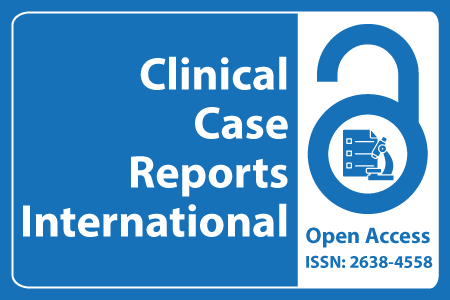
Journal Basic Info
- Impact Factor: 0.285**
- H-Index: 6
- ISSN: 2638-4558
- DOI: 10.25107/2638-4558
Major Scope
- Endocrinology
- Cancer Clinic
- Molecular Biology
- Food Science
- Mental Health
- Physiotherapy
- Emergency Medicine and Critical Care
- Sexual Health
Abstract
Citation: Clin Case Rep Int. 2024;8(1):1648.DOI: 10.25107/2638-4558.1648
Effects of Functional Electrical Stimulation-Cycling on Muscle Thickness and Blood Glucose Level in Neuromuscular Disease Mechanically Ventilated Patient: Case Report
Frazão M, de Lima DT, Nogueira AP, Leandro Guedes TDS, Pinto Dias AL, da Silva Lima MVD, Mota Fernandes IA
Lauro Wanderley University Hospital – EBSERH, Brazil
CLINAR – Exercise Physiology, João Pessoa, Brazil
Federal University of Paraíba – UFPB, João Pessoa, Brazil
*Correspondance to: Murillo Frazão
PDF Full Text Case Report | Open Access
Abstract:
Details of the clinical case: This is a case of a 49-year-old male patient diagnosed with severe chronic inflammatory demyelinating polyradiculoneuritis. At the beginning of the study, the patient was in a good general condition and breathing under mechanical ventilation through tracheostomy. Muscle ultrasound and blood glucose were evaluated before and after 10 sessions of Functional Electrical Stimulation (FES)-cycling. An isokinetic FES-cycling mode (20 rotations per minute) was used and the FES parameters were: 75 Hz frequency, 800 μs to 900 μs pulse width and 170 mA to 210 mA intensity. Rectus Femoris thickness increased 12% after FES-cycling (138 vs. 154 mm). Vastus Intermedius thickness was almost unchanged (96 vs. 98 mm, +2%). Mean blood glucose level reduced 21% after FES-cycling (162 vs. 128 mg/dL). There was a 27% reduction at 6:00 am (132 vs. 96 mg/dL), 15% reduction at 12:00 noon (166 vs. 142 mg/dL), and 21% reduction at 06:00 pm (187 vs. 147 mg/dL). Discussion: To our knowledge, this is the first time that FES-cycling has been reported in a neuromuscular disease. It contributed to preventing/reducing the effects of physical inactivity. Due to huge impairment in the neuromuscular pathway, the patient needed high levels of electrical charge (high pulse width and intensity). The therapy was safe (no adverse events were reported during treatment), feasible and well tolerated. Summary: It was demonstrated that 10 sessions of FES-cycling prevented muscle mass wasting and improved blood glucose control in a neuromuscular disease mechanically ventilated patient.
Keywords:
FES-cycling; Exercise; Muscle; Blood glucose
Cite the Article:
Frazão M, de Lima DT, Nogueira AP, Leandro Guedes TDS, Pinto Dias AL, da Silva Lima MVD, et al. Effects of Functional Electrical Stimulation- Cycling on Muscle Thickness and Blood Glucose Level in Neuromuscular Disease Mechanically Ventilated Patient: Case Report. Clin Case Rep Int. 2024; 8: 1648.













